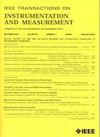Self-Calibrated Stitching Test of X-Ray Flat Mirrors for Achieving Single-Nanometer and Nanoradian Long-Term Reproductivity
IF 5.6
2区 工程技术
Q1 ENGINEERING, ELECTRICAL & ELECTRONIC
IEEE Transactions on Instrumentation and Measurement
Pub Date : 2025-04-07
DOI:10.1109/TIM.2025.3556163
引用次数: 0
Abstract
X-ray flat surfaces utilized in most advanced light sources have posed challenges to achieving form accuracy of peak-to-valley (PV) 2 nm, root mean square (rms) 0.2 nm, and rms 50 nrad. Measurement of the form error with high long-term reproductivity, i.e., repeatability over time of at least one day and with test surface remounted, is the key to a direct deterministic figuring process. To this end, the models of two main error sources—long-term environment disturbance and retrace error—have been established. The different error period components of the long-term environment disturbance and their influence on the full-aperture test accuracy have been investigated. The method of determining the adequate subaperture size, overlapping ratio, and tilt misalignment threshold for decreasing the influence of the long-term environment disturbance and the retrace error is reported. The PV value standard uncertainty is evaluated to be 0.092 nm. Experiments on an X-ray flat with a clear aperture (CA) of实现单纳米和纳米辐射长期再生产的x射线平面镜自校准拼接试验
在大多数先进光源中使用的x射线平面对实现峰谷(PV) 2 nm、均方根(rms) 0.2 nm和rms 50 nrad的形状精度提出了挑战。具有高长期可重复性的形状误差测量,即至少一天的可重复性和重新安装测试表面,是直接确定计算过程的关键。为此,建立了长期环境干扰和回溯误差两个主要误差源的模型。研究了长期环境扰动的不同误差周期分量及其对全孔径测试精度的影响。提出了确定合适的子孔径大小、重叠比和倾斜失调阈值以减小长期环境干扰和回波误差影响的方法。评价PV值标准不确定度为0.092 nm。在250\ × 30$ mm的x射线平台下,用优化后的测试参数和其他参数进行了实验比较。通过自一致性实验,验证了该方法的长期再现性可以达到PV = 0.908 nm, rms = 0.076 nm, rms = 32 nrad,满足第四代同步辐射和自由电子激光器的典型测试精度。
本文章由计算机程序翻译,如有差异,请以英文原文为准。
求助全文
约1分钟内获得全文
求助全文
来源期刊

IEEE Transactions on Instrumentation and Measurement
工程技术-工程:电子与电气
CiteScore
9.00
自引率
23.20%
发文量
1294
审稿时长
3.9 months
期刊介绍:
Papers are sought that address innovative solutions to the development and use of electrical and electronic instruments and equipment to measure, monitor and/or record physical phenomena for the purpose of advancing measurement science, methods, functionality and applications. The scope of these papers may encompass: (1) theory, methodology, and practice of measurement; (2) design, development and evaluation of instrumentation and measurement systems and components used in generating, acquiring, conditioning and processing signals; (3) analysis, representation, display, and preservation of the information obtained from a set of measurements; and (4) scientific and technical support to establishment and maintenance of technical standards in the field of Instrumentation and Measurement.
 求助内容:
求助内容: 应助结果提醒方式:
应助结果提醒方式:


